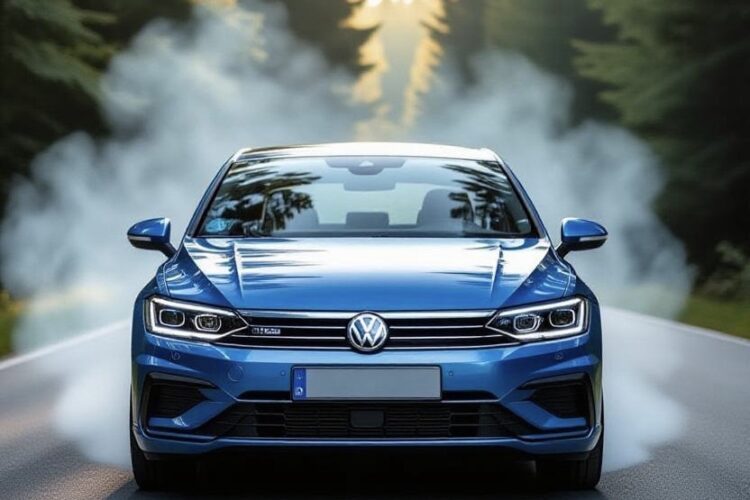The Volkswagen Dieselgate scandal, revealed in 2015, exposed the company’s use of defeat device software in 11 million diesel vehicles, including Jetta, Golf, Passat, and Audi models, to cheat emissions tests. These cars emitted up to 40 times the legal NOx limits, worsening air pollution, smog, and health issues like asthma and heart problems. The EPA’s 2015 violation notice led to Volkswagen’s admission, triggering global recalls, buybacks, and over $37 billion in fines. Key figures like CEO Martin Winterkorn resigned, and executives faced charges. The scandal, affecting 2009–2015 models, prompted a shift to electric vehicles, with Volkswagen investing in chargers and battery factories. Health impacts included thousands of premature deaths, and 2025 UK trials continue to seek compensation for affected owners.
Long Version
The Volkswagen Dieselgate Scandal: A Decade of Deception, Consequences, and Ongoing Reckoning
The Volkswagen emissions scandal, widely known as Dieselgate, erupted in September 2015 when the company admitted to installing defeat devices in approximately 11 million diesel vehicles worldwide. This software manipulated emissions testing, allowing cars to appear compliant with strict regulations while emitting up to 40 times the legal limits of nitrogen oxides (NOx) in real-world driving. The crisis involved turbocharged direct injection (TDI) engines like the EA 189, EA 188, and EA 288, affecting models such as the Jetta, Golf, Passat, Beetle, Audi A3, A6, A7, A8, Q5, Q7, Porsche Cayenne, Volkswagen Touareg, and even Škoda, SEAT, and Amarok variants. It violated key standards including the US Clean Air Act, Tier 2 Bin 5, LEV-II ULEV, Euro 5, and Euro 6, as well as the New European Driving Cycle (NEDC) and Worldwide Harmonized Light Vehicles Test Procedures (WLTP). The scandal highlighted flaws in laboratory emissions testing versus on-road emissions measured by portable emissions measurement systems (PEMS), exposing a cover-up that led to massive recalls, buybacks, fines exceeding $37 billion, and profound health damage from air pollutants like particulate matter (PM10), soot, ozone, smog, and acid rain.
Background: The Push for Clean Diesel and Early Warnings
Volkswagen’s pursuit of “clean diesel” technology began in the early 2000s, amid rising Corporate Average Fuel Economy (CAFE) standards and incentives for low-emission vehicles. In 2005, the company licensed Mercedes’ BlueTec selective catalytic reduction (SCR) system but abandoned it in 2007 due to costs, opting instead for a lean NOx trap (LNT) in their common-rail fuel injection engines. This decision set the stage for fraud, as engineers programmed the engine control unit (ECU) to detect dynamometer testing conditions—such as the FTP-75 test schedule—and activate full emissions controls only then. Bosch, a key supplier, warned Volkswagen in 2007 against illegal use of this software, but the company proceeded, deploying it in 2009–2015 model years.
Early warnings about emissions discrepancies dated back to 1998, with critiques of testing cycles allowing real-world pollution far exceeding lab results. A 2011 European Commission Joint Research Centre report flagged potential defeat devices, while the International Council on Clean Transportation (ICCT) and West Virginia University (WVU) CAFEE’s 2013–2014 studies using PEMS revealed NOx levels 15–35 times over limits in vehicles like the Jetta TDI and Passat. These findings, shared with the EPA and California Air Resources Board (CARB), exposed the gap between laboratory and on-road emissions, contributing to environmental pollution linked to climate change, respiratory problems, asthma, bronchitis, emphysema, heart problems, low birth weight, infant mortality, and disability-adjusted life years (DALYs).
Technical Details: How the Defeat Device Worked
At the core was the defeat device: ECU software that switched between “normal” mode—prioritizing fuel economy and performance, emitting high NOx, carbon dioxide (CO2), and nitrous oxide (N2O)—and “test” mode, engaging exhaust treatment components like catalytic converters, three-way catalytic converters, and SCR for compliance. Affected engines included 2.0-litre TDI, 3.0-litre TDI, 3.0-litre V6 TDI, 1.2-litre diesel, and 1.6-litre diesel. For instance, the EA 189 engine in Euro 5 vehicles used LNT, while some incorporated ultra-fast electric vehicle chargers in later fixes via Electrify America and Electrify Canada initiatives.
Cycle beating allowed vehicles to pass tests on a dyno but fail in real driving, where emissions-cheating software suppressed controls. Fixes varied: software updates for most, hardware modifications like tainted software removal and refits for others. In the US, where standards were stricter (US Tier 2 at 0.07 g/mi NOx), no simple fix existed initially, leading to buybacks. European approvals from the Kraftfahrt-Bundesamt (KBA) came in November 2015 for 1.2/1.6/2.0L engines, ensuring compliance without sales decline or workforce reduction impacts.
Discovery, Reactions, and Timeline
The scandal broke on September 18, 2015, with the EPA’s Notice of Violation (NOV) alleging conspiracy to defraud. Volkswagen’s public announcement followed on September 20, with an apology from CEO Martin Winterkorn, who resigned days later amid a probe. Michael Horn, US CEO, testified before Congress on October 8, admitting deception, and resigned in March 2016. Matthias Müller took over, overseeing a crisis involving stock plunges, compensation plans, and a voluntary recall initially proposed in December 2014 but deemed inadequate.
Key timeline events: 2009–2015 model years affected; ICCT/WVU tests in 2013–2014; admission on September 3, 2015; CO2 irregularities announced November 3, 2015 (affecting 800,000 vehicles, later revised to 36,000); KBA approvals November 25; US settlement April 21, 2016; guilty plea January 11, 2017; Winterkorn indictment May 3, 2018; Audi fine October 16, 2018. Investigations by the US Department of Justice, Securities and Exchange Commission (SEC), Federal Trade Commission (FTC), and European Anti-Fraud Office (OLAF) revealed internal knowledge since 2006, with at least 30 managers aware.
Affected Vehicles, Models, and Participants
Globally, 11 million vehicles were tainted, including 500,000 in the US (2.0L TDI) and 85,000 (3.0L TDI). Models spanned Volkswagen Group subsidiaries: Audi Quattro, A1; Porsche; Mercedes-Benz, BMW, Volvo, Renault, Jeep, Hyundai, Citroën, Fiat (though primarily VW). Executives like Oliver Schmidt (arrested January 7, 2017), Rupert Stadler (arrested June 18, 2018), Heinz-Jakob Neusser, Ulrich Hackenberg, Wolfgang Hatz faced charges. Bosch supplied components, while Jones Day and Louis Freeh led independent audits. Impacts included resale value drops, writedowns, and bond credit rating downgrades.
Legal Proceedings and Settlements
In the US, multidistrict litigation (MDL) under the Judicial Panel on Multidistrict Litigation consolidated class-action lawsuits for breach of contract, false advertising, and market manipulation. Volkswagen pleaded guilty to fraud charges, paying $4.3 billion in penalties, including a $2.8 billion criminal fine. Settlements totaled $33.3 billion by 2020, with $10 billion for buybacks, $2.7 billion for environmental mitigation, and $2 billion for zero-emissions vehicles investment, including battery factories.
Europe saw Verletzung der Aufsichtspflicht probes; Germany imposed a €1 billion fine in 2018, with Oberlandesgericht and Federal Court of Justice rulings favoring consumers. The VZBV settlement in 2020 paid €830 million to 260,000 owners. UK’s High Court of Justice allowed actions for 91,000 in 2020, settling £193 million in 2022. Other countries: Australian Competition & Consumer Commission (ACCC) fined A$125 million; Environment Canada, Ontario Government, China’s General Administration of Quality Supervision, Inspection and Quarantine (AQSIQ), Romanian Automotive Registry (RAR), Belgium’s Chamber of Representatives (Parlementair Document 54K1720), and FCA 2166 involved. EU Bank loans were scrutinized for fraud.
Criminal Charges and Investigations
Criminal probes led to indictments: Winterkorn for conspiracy; Schmidt’s guilty plea; Stadler’s charges in Munich. US charged six executives in 2017; Braunschweig added more in 2020. Special committees and enforcement investigations uncovered statement of facts and consent decrees. As of 2025, four former managers were convicted in Germany in May.
Health and Environmental Impacts
Excess emissions caused 59 premature deaths in the US and thousands globally, per studies estimating 81,000 by 2040 in Europe. NOx worsened smog, acid rain, and health risks, with a 2025 UK report linking 16,000 deaths. Public health impacts included excess emissions tied to environmental mitigation needs.
Financial Consequences and Company Responses
Volkswagen earmarked $7.3 billion initially, ballooning to over €32 billion in fines, penalties, and settlements. Stock values crashed 37% in days, with sales declines and 30,000 workforce reductions offset by electric vehicle jobs. Responses included executive pay overhaul, integrity directors like Christine Hohmann-Dennhardt, and a pivot to electric vehicles—30 models by 2025, 25% sales electric. Electrify America invested in chargers, while risk warning notices and guilty pleas marked accountability.
Recent Developments in 2025
A decade on, Dieselgate reverberates with UK trials against five carmakers (including VW, Mercedes, Ford, Renault, Peugeot, Nissan) starting October 2025, involving 1.6 million claimants seeking compensation for defeat devices breaching EU rules. Expert evidence shows ongoing high NOx, impacting “little lungs” and public health. Penalties mostly in the US, but UK actions could add billions, proving the scandal’s enduring legacy.
Hashtags For Social Media
#Dieselgate #VolkswagenScandal #VWEmissionFraud #CleanDieselMyth #DefeatDevice #EmissionCheating #VolkswagenDiesel #NOxPollution #CarScandal #EnvironmentalFraud #AutoIndustryDrama #VWCrisis #DieselgateExposed #EmissionTests #VolkswagenFines #GreenCarLie #Dieselgate2025 #CarEmissionScandal #VWLawsuit #EcoFraud #VolkswagenRecall #AirPollution #DieselgateImpact #AutoFraud #VWCoverUp #EmissionGate #CarIndustryNews #VolkswagenBuyback #PollutionScandal #DieselgateTruth
Related Questions, Words, Phrases
what is the volkswagen dieselgate scandal | how did volkswagen cheat emissions tests | what caused the dieselgate scandal | volkswagen emissions fraud explained | details of vw dieselgate software | what are defeat devices in cars | impact of dieselgate on volkswagen | how much were vw dieselgate fines | who was affected by volkswagen scandal | volkswagen diesel emissions health risks | what models were in dieselgate | vw dieselgate timeline of events | why did volkswagen use defeat devices | legal consequences of dieselgate | volkswagen dieselgate settlement details | how did epa discover dieselgate | what is nox in dieselgate scandal | vw dieselgate recall process | environmental impact of volkswagen scandal | who faced charges in dieselgate | volkswagen dieselgate buyback program | how did dieselgate affect car owners | what engines were in vw scandal | role of bosch in dieselgate | dieselgate class action lawsuits | volkswagen stock crash dieselgate | how vw shifted to electric after dieselgate | what are dieselgate health impacts | vw dieselgate investigation details | how did dieselgate change emissions testing | volkswagen tdi engine issues | dieselgate and air pollution effects | what happened to vw ceo after dieselgate | volkswagen dieselgate global reach | long-term effects of dieselgate scandal






